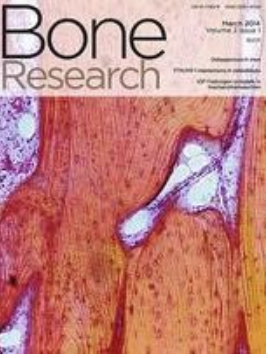The relationship between OPLL and metabolic disorders.
IF 15
1区 医学
Q1 CELL & TISSUE ENGINEERING
引用次数: 0
Abstract
Ossification of the posterior longitudinal ligament (OPLL) is a degenerative disease characterized by progressive ectopic bone formation process, which can lead to severe neurological impairments and reduced quality of life. While the etiology of OPLL is generally considered multifactorial, there is no consensus regarding these contributing factors including genetic, endocrine, biomechanical, immune and lifestyle factors. Through accumulating evidence from multidisciplinary investigations, the pathophysiological connection between OPLL and endocrine-metabolic dysregulation is becoming increasingly clear. Nevertheless, comprehensive understanding of the relationship between the two is hindered by several problems, such as methodological limitations and inadequate mechanistic studies. This review takes a deep dive into the possible factors contributing to OPLL from all aspects of metabolism, including glucose metabolism, lipid metabolism, bone and mineral metabolism, leptin, vitamin, growth hormone/IGF-1 and sex hormones, highlighting their potential roles in the onset and progression of OPLL. Clarifying the etiology of OPLL and elucidating the underlying pathogenesis are crucial for advancing both early intervention strategies and therapeutic approaches in clinical management. Therefore, the endocrine and metabolic disorders in OPLL patients should become a focus of future research.OPLL与代谢紊乱的关系。
后纵韧带骨化(OPLL)是一种以进行性异位骨形成过程为特征的退行性疾病,可导致严重的神经损伤和生活质量下降。虽然OPLL的病因通常被认为是多因素的,但对于这些因素,包括遗传、内分泌、生物力学、免疫和生活方式因素,尚未达成共识。通过多学科研究的证据积累,OPLL与内分泌代谢失调之间的病理生理联系越来越清楚。然而,对两者之间关系的全面理解受到一些问题的阻碍,例如方法上的限制和不充分的机制研究。本文从代谢的各个方面,包括葡萄糖代谢、脂质代谢、骨和矿物质代谢、瘦素、维生素、生长激素/IGF-1和性激素等,深入探讨了诱发OPLL的可能因素,重点介绍了它们在OPLL发病和发展中的潜在作用。明确OPLL的病因和潜在的发病机制对于推进早期干预策略和临床治疗方法至关重要。因此,OPLL患者的内分泌代谢紊乱应成为今后研究的重点。
本文章由计算机程序翻译,如有差异,请以英文原文为准。
求助全文
约1分钟内获得全文
求助全文
来源期刊

Bone Research
CELL & TISSUE ENGINEERING-
CiteScore
20.00
自引率
4.70%
发文量
289
审稿时长
20 weeks
期刊介绍:
Established in 2013, Bone Research is a newly-founded English-language periodical that centers on the basic and clinical facets of bone biology, pathophysiology, and regeneration. It is dedicated to championing key findings emerging from both basic investigations and clinical research concerning bone-related topics. The journal's objective is to globally disseminate research in bone-related physiology, pathology, diseases, and treatment, contributing to the advancement of knowledge in this field.
 求助内容:
求助内容: 应助结果提醒方式:
应助结果提醒方式:


